The world of fly fishing lines may be a huddled one-there square measure many choices to settle on from within the trout fishing class alone. Then you have got to induce into line weights and types; breaking it right down to the best matters, first, there square measure floating and sinking lines, then there square measure four basic types of line taper.
A floating line clearly floats, and it's used for dry-fly fishing or throwing nymphs and streamers into shallow water. There square measure 2 general kinds of sinking line; sink-tip line, wherever solely the tip goes right down to get the fly deep, and sinking line, wherever the complete line sinks, creating it helpful for fishing in lakes and ponds.
Then, there square measure totally different sink rates for sinking line as indicated by variety from one to eight that corresponds to the number of inches the road can sink per second. Reed : Best Spincast Reels
Regarding line taper, weight-forward (WF) tapered line is intended with the heaviest half toward the front of the road and therefore the tip section tapered right down to offer to cast precision-this is maybe the foremost common line in use because it is that the best for general casting and may be employed in most of the fishing things you may encounter.
Double-taper (DT) has identical tapers at every finish and is best for the brief to moderate casting distances.
Shooting tip line is analogous to WF line, however, is just regarding thirty linear unit. long and is supposed to be hooked up to a smaller-diameter shooting line. And lastly, integrated shooting taper line is analogous to shooting tip except that the shooting line is for good hooked up to the tapered head.
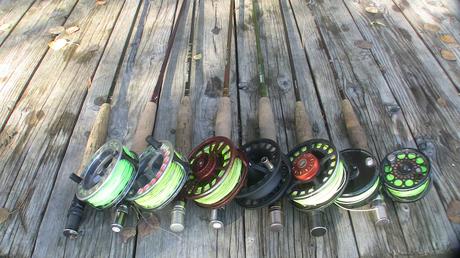
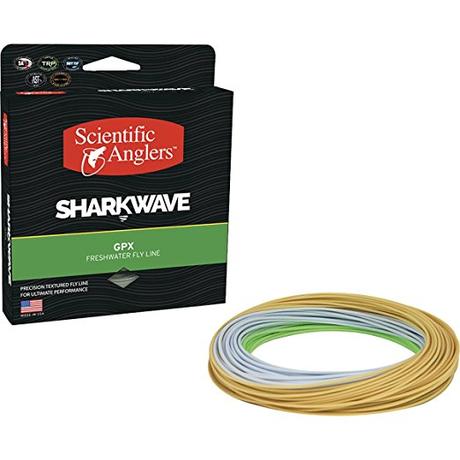
Scientific Anglers has been associate degree mastermind in fly line technology since 1945, and that they square measure one in every of the biggest fly line makers.
Their SharkWave GPX may be an advanced fly line that's designed a small significant to assist load fast-action rods and increase line speed and management. This line options 3 totally different textures together with fabric surface technology that traps air for higher flotation and reduced friction, and a sleek reference within the handling section at the line's 30-foot mark. the road trip has embedded micro-balloons for increased float. the road conjointly has three color tones thus it's simple to grasp what quantity line you've got out on the water. Sharkwave GPX may be a smart well-rounded trout line which will work well with most rods.
Pros:
- Extra weight makes the road solid higher in windy conditions
- Good comprehensive performance
- Colored sections square measure helpful
Cons:
- Texturing makes noise probing the rod guides
- High worth purpose
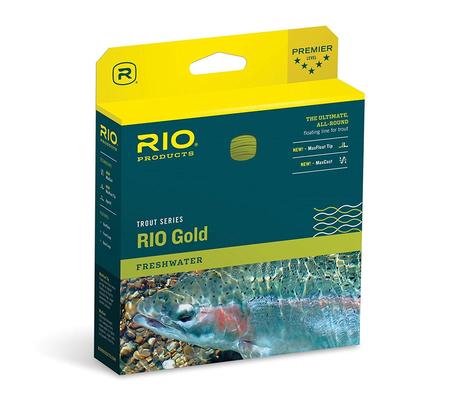
The urban center Gold could be a smart multi-tasking line that may do everything you may would like for each day on the stream.
Its taper style produces a weight distribution that hundreds the rod quickly, creating short casts straightforward. At an equivalent time, smart loop stability and an extended belly enables you to get lots of line within the air. the road is extremely slick, creating for swish, long casts and giving the road smart dirt-repellent properties. The front of the road features a welded loop, creating it straightforward to vary leaders. Another nice feature is that the color modification between the tip and also the
pros:
- Very slick and smooth-casting
- Welded loops on each ends
- Color modification at the tip
cons:
- Durability of the coating is questionable
- Price is on the high aspect
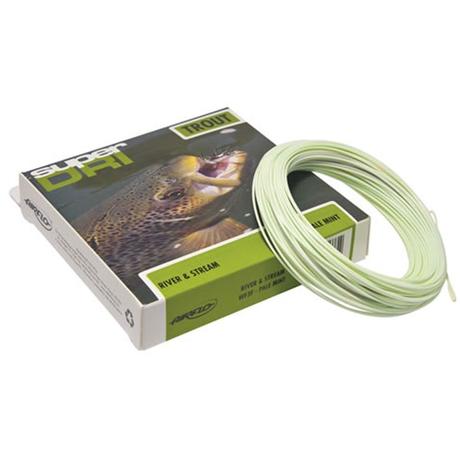
The Super-Dry line from Airflois created for trout fishing in mountain rivers wherever you have got to mix smart presentation with strength.
The line options a decorated nylon core and Super-Dri ridged texture on the coating to cut back friction through the guides. a typical taper with a delta profile enhances casting distance whereas creating nice displays simple. this can be a lighter-weight line that works best on soft rods for short- and mid-distance casting.
pros:
- Makes sensible shows straightforward
- Works well on soft rods
cons:
- Price is on the high aspect

Orvis Clearwater fly line is intended with options to assist the start fly trained worker. it's a adorned multifilament core that has smart handling and performance in a very wide selection of conditions.
The line is constructed a small serious to assist load the rod, and its compact head transfers a lot of energy to the leader, creating for higher turnover. we tend to found it to be an extremely slick line, most likely as a result of it's engineered with Integrated Slickness, Orvis' proprietary friction-reducing additive.
A couple of options we tend to likable were the sturdy welded loop and therefore the line ID-each line has the taper, weight, and practicality written thereon. The Clearwater may be a nice choice for beginners associate degreed comes at an inviting value purpose
pros:
- Easy handling and casting
- Has the options of a costlier line
cons:
- Tip features a tendency to start out sinking because the line wears
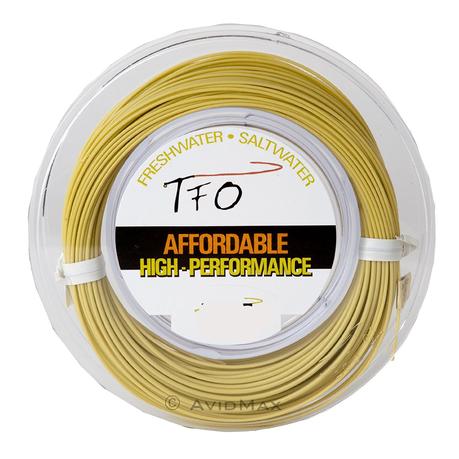
Lightweight-forward fly line is one in every of the foremost versatile, reasonable lines for the money. It comes in 100-foot rolls in high-visibility orange colours, and also the superior dirt resistance and nice worth build it a superb line for apply casting or giving directions to new fly fishermen.
The line is that the product of a partnership between Temple Fork Outfitters and leading line company dessert apple, and is meant to be an ideal match for TFO rods. This line performs well altogether situations-it is rated for seawater use, and a adorned nylon core provides the strength required for heavy applications.
pros:
- High-performance line at an excellent worth
- Versatile multi-purpose line
cons:
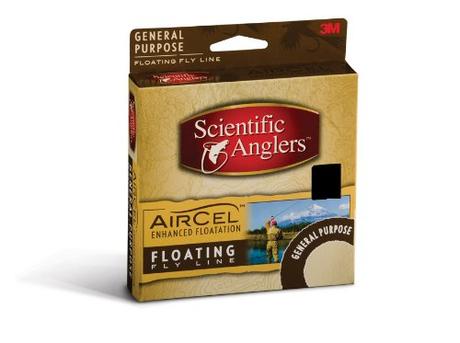
Scientific Anglers ar the originators of the trendy floating fly line, and their Air Celline is verified for its sturdiness and sensible float characteristics.
A decorated multi filament nylon core and integrated 3M PVC coating play a slick line that casts so much. Air Cel comes in weight-forward and double-taper designs and is obtainable at a pleasant worth purpose for the weekend skilled worker. it's created to handle well in any weather or fishing surroundings and is right for medium-length casting on streams and ponds.
pors:
- A low-memory line that handles well right out of the box
- Internal lubricants work a really slick line
cons:
- No welded loop connections
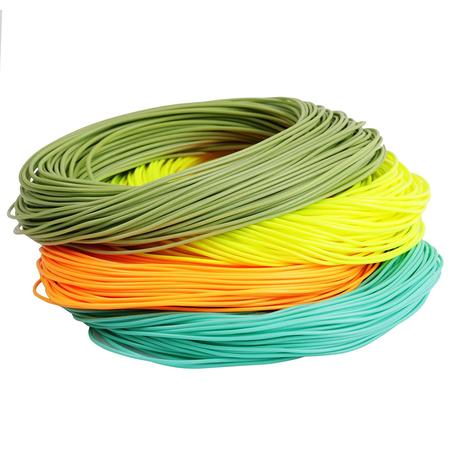
We were affected by the options this fly line has-it compares to much more dear lines and is one in every of the simplest values for the money out there. The welded loops square measure cleanly done, the road slides through the rod eyes swimmingly, and it's to be sturdy. The adorned nylon core provides low-memory performance all told climatic conditions, and an extended head with a shooting taper makes it simple to manage the road and will increase casting distance.
pros:
- 1-year warrant
- Excellent worth purpose
cons:
- PVC coating might not a blockage to sun well
Let ME begin by oral communication that rod makers style rods for the typical person to use beneath average conditions. therefore sadly, most fly fishermen use just one weight of line on their favorite rod.
Written on the rod blank or handle could be a code range that indicates the road that the rod manufacturer suggests is best for many customers; i.e., 6 line. To most fly anglers, this implies that they ought to use nothing, however, a half dozen weight line with this rod. however, to induce the total potential from totally different fishing things, you'll need to think about victimization many line sizes on your rod - maybe variable the maximum amount as 2 line sizes from the one urged on the rod.
Manufacturers grasp your rod is also employed in a bunch of fishing things, however, they can't choose your casting vogue and fishing skills. therefore after they place a counseled line range on your rod, it's understood that it's for average fishing conditions. First, perceive that you're not planning to injury a fishing rod victimization fly line slightly lighter or heavier than is usually recommended. Certainly, at times, the rod can fish higher if totally different line sizes square measure used.
Match line weight to conditions
Let ME cite many samples of once you would possibly need to use numerous line weights on the constant rod for various fishing conditions you'll encounter.
First, if you fish a swift, tumbling mountain brook, you'll use a rather short leader with a fly. a pacesetter of 7-1/2 feet long would in all probability do the simplest job. however, if you fish for trout with a constant outfit and fly on a relaxed spring creek, beaver pool or quiet lake, that short leader may stop you from catching several fish. whereas several fishermen mechanically grasp that on calmer water they need to use longer leaders, several of them don't very probe any deeper into "why" they have an extended leader.
It isn't the leader's length that's therefore vital. In calm water, what frightens the trout is that the line falling to the surface. The longer the leader, the farther faraway from the fly is that the landing of the road.
But with an extended leader, the tougher it's too solid and there's a discount inaccuracy. Thus, a 9-foot leader is additional correct and easier to show over than a 15-footer. Considering this, and the actual fact that the landing of the road is what's horrifying the trout, there's an easy resolution. Use a fly line one size lighter than the rod manufacturer recommends. Jim Green, World Health Organization has designed fly rods for years and could be an excellent angler, MEntioned to me over 3 decades agone that he nearly always used a line one size lighter once fishing dry flies wherever the trout were spooky or the water was calm. i attempted it and have habitually followed his recommendation. So, as an example, if you're employing a six weight rod, you'll sink to a 5 weight line with no downside. In fact, in terribly delicate fishing conditions, I usually sink 2 sizes in line weights. there's a reason.
Weight and speed have to be compelled to vary
Fly rods square measure designed to solid a specific weight of line - with an honest little bit of line speed. If you sink a line size, you profit in 2 ways in which. One, the road goes to alight on the water softer than a heavier line. Two, as a result of it's not as significant, it doesn't develop the maximum amount line speed. A line traveling at high speed usually involves the water with a heavier impact than one that's moving slower. Even with a line 2 sizes lighter, you'll still solid a fly or nymph way more distance than what's drawn up in delicate trout fishing things. therefore you don't hamper yourself in the slightest degree by employing a line lighter than the rod suggests. better of all, you'll currently use a shorter leader, since the impact on the surface has been lessened.
There is a second state of affairs wherever a lighter than the traditional line can assist you if you're a reasonably smart caster. The wind is processing and you wish to achieve bent a remote target. several try and solve this common downside by employing a line one size heavier. the standard thinking is that a heavier line permits them to throw additional weight and, they hope, get an additional distance. Actually, planning to a heavier line implies that they complicate the matter.
On a cast, the road unrolls toward the target in a very loop type. The larger the loop, the additional energy is thrown in a very direction that's not at the target. once fishermen overload a fishing rod with a line heavier than the manufacturer requires, they cause the rod to flex additional deeply, that creates larger loops on longer casts. Overloading the rod wastes casting energy by not directive it at the target.
If you turn to a lighter line, you'll not have enough weight outside the rod tip to cause the rod to load or flex properly - if you hold the conventional quantity of line outside the rod throughout casting. however if you extend this lighter line concerning ten feet or slightly additional outside the rod than you usually would for this solid beneath calm conditions, you'll solid a larger distance into the wind. By extending the extra quantity of lighter line outside the rod, you cause it to flex as if you were false casting the conventional length of the counseled line size.
Since the rod is currently flexing properly, it'll deliver tight loops, however the lighter line is agent. this implies that there'll be less air resistance encountered on the solid.
If you're forced to solid a extended distance into the wind, switch to 1 size lighter line and extend slightly additional line outside the rod tip than you usually would. This means, of course, that you simply have to be compelled to be ready to handle a extended line throughout false casting. however the road that's lighter than the rod requires can allow you to solid farther into the breeze.
Heavier line is usually necessary
There square measure things wherever employing a line heavier than the rod requires will aid in casting and catching fish, like once fishing tiny streams for trout. wherever pools square measure short and casts square measure restricted in distance, a heavier line is simply the correct answer. as an example, on several brook trout streams, the pool is also solely ten or fifteen feet long and you're forced to use a pacesetter that's a minimum of 7-1/2 feet long. which means that solely many feet of your fly line - the load that hundreds or flexes the rod - is outside the rod tip. once fishing wherever distance is extremely short and solely many feet of fly line square measure outside the rod tip, it's vital to modify to a line that's heavier. as an example, if you were employing a rod designed for a four-weight line and had to solid most of the time at targets but twenty feet, inserting a five- or maybe a six-weight line on the rod would allow you to load the rod, and casting would be abundant easier.
This same principle applies once you square measure bass fishing within the southern swamps. Often, you're casting in tiny, winding creeks, or wherever there's plenty of brush straightaway behind you. This conjointly holds true once fishing the backcountry of FL for robolo, wherever you're near the target and backcast space is proscribed. If you're employing a rod designed to throw AN eight-weight line and you're fishing at thirty to forty feet from the {target space|target|topographic point|place|spot} and also the backcast area is a smaller amount than that, a nine-weight line can allow you to solid far better as a result of the heavier line can make full the rod and let it flex.
Heavily weighted lines, just like the Wet Cel III or Uniform Sink +, will and will usually be employed in one to 2 sizes heavier than the rod requires as a result of, for a few reason, a line one size heavier looks to enhance distance casting. strive one and you'll see what I mean.
Use shooting TAPERS for larger distance
Finally, take into account shooting tapers (also referred to as "heads"), that square measure usually accustomed acquire larger distance. once casting with traditional line, if you solid well, you ne'er hold simply thirty feet of line outside the rod tip to induce distance. Instead, you false solid with significantly over thirty feet of line outside. once employing a shooting head, strive victimization one that's a size heavier than you always do and you'll be pleasantly shocked at the gap you gain.
So don't limit yourself to the quality pointers given by rod makers. Experiment with totally different line weights for special fishing conditions. you'll be happy with the results.
